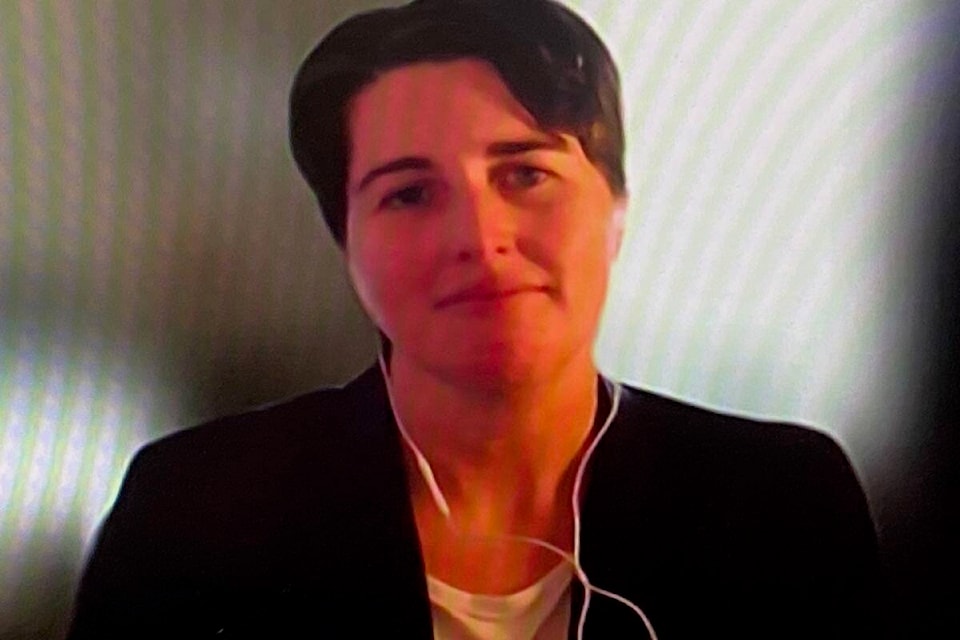The Columbia Shuswap Invasive Species Society has been keeping a keen eye out for insects, weeds and mollusks that could harm the environment.
CSISS executive director Robyn Hooper made a presentation to the Columbia Shuswap Regional District board on Sept. 14, bringing directors up to speed on what the organization has been doing since it began 10 years ago.
CSISS is a not-for-profit organization working with a network of partners to facilitate the prevention, reduction and management of invasive species through collaboration, engagement and education.
The organization’s vision is that the environment, the economy and society of the Columbia Shuswap Regional District are protected from the adverse impacts of invasive species.
Hooper explained that a “small and mighty” carries out the organization’s work while a diverse board of directors includes representation from forestry, local government, agriculture and other environmental consulting groups. She said she would like to see Indigenous representation on the board again.
Hooper said that CSRD environmental service coordinator Hamish Kassa will be recognized at the CSISS AGM on Oct.17.
“He has been on the board for 10 years and if it weren’t for his dedication and support, we wouldn’t be where we are,” she said.
“We’re very grateful for him.”
Hooper is also impressed with the 12 other groups in the province that CSISS collaborates with and the two with whom the organization works closely – the Central Kootenay Invasive Species Society and East Kootenay Invasive Species Council.
She stressed the importance of collaborating on outreach materials and messages and said prevention is the number-one management strategy and only long-term solution in dealing with invasive species, and education is how the message is shared.
CSISS’s Outreach program has five components:
• “Plantwise” is a consumer and industry education program designed to build understanding of the problems caused by invasive species, increasing demand for non-invasive plants, and to support the horticultural industry’s transition to becoming free of invasive species.
• The “Don’t Let it Loose,” CSISS asks water gardeners, aquarium and terrarium owners to choose wisely from a variety of available aquatic plants, invertebrates, reptiles and fish. “Unfortunately, some of these exotic species have the potential to become invasive,” said Hooper, noting pets that become too much for the owner to care for are sometimes let loose into nearby water or woods.
“Don’t let it loose.”
•“Play Clean Go” is an education outreach campaign that encourages outdoor recreation while protecting valuable natural resources. The objective is to slow stop the spread of terrestrial invasive species through changes in behaviour of those using outdoor spaces.
• Boats and other watercraft, including kayaks and canoes, easily and frequently carry invasive species from one body of water to another. The “Clean Drain Dry,” program component encourages watercraft users to clean, drain and dry all boats and equipment to help reduce the spread of invasive plants and organisms to B.C. waters.
•B.C.’s forests are being threatened by non-native insects that can damage large numbers of trees, and new infestations of harmful insects and diseases are often found first in campgrounds and parks. “Buy Local, Burn Local” promotes the protection of forests by preventing accidental spread of invasive species that might be transported in firewood.
Since 2013, there have been more than 25,000 direct interactions with people, 810 events including 72 workshops for training and 51 youth education sessions, delivered 14,610 education materials.
CSISS has taken 739 water samples have been taken in 13 water bodies and Hooper was pleased to report that no zebra or quagga mussels have been found.
This is good news as the latest data reveals that the economic impact of the invasive mussels could be $100 million annually.
Hooper called climate change double trouble as climate extremes create new opportunities for invasion and invasives will emerge earlier and stay longer.
As well, invasive species could become more competitive and shift their ranges into new ecosystems.
READ MORE:



